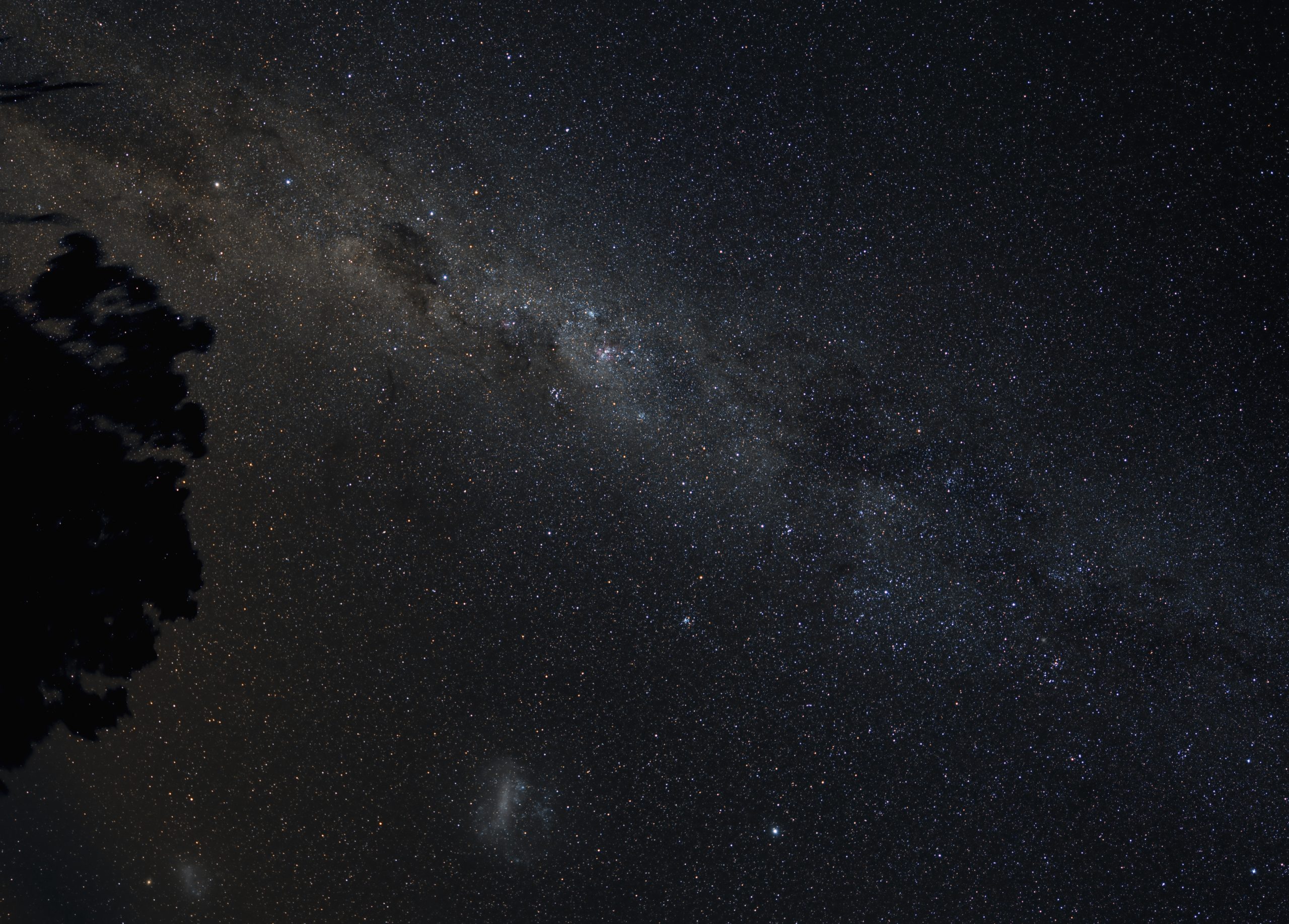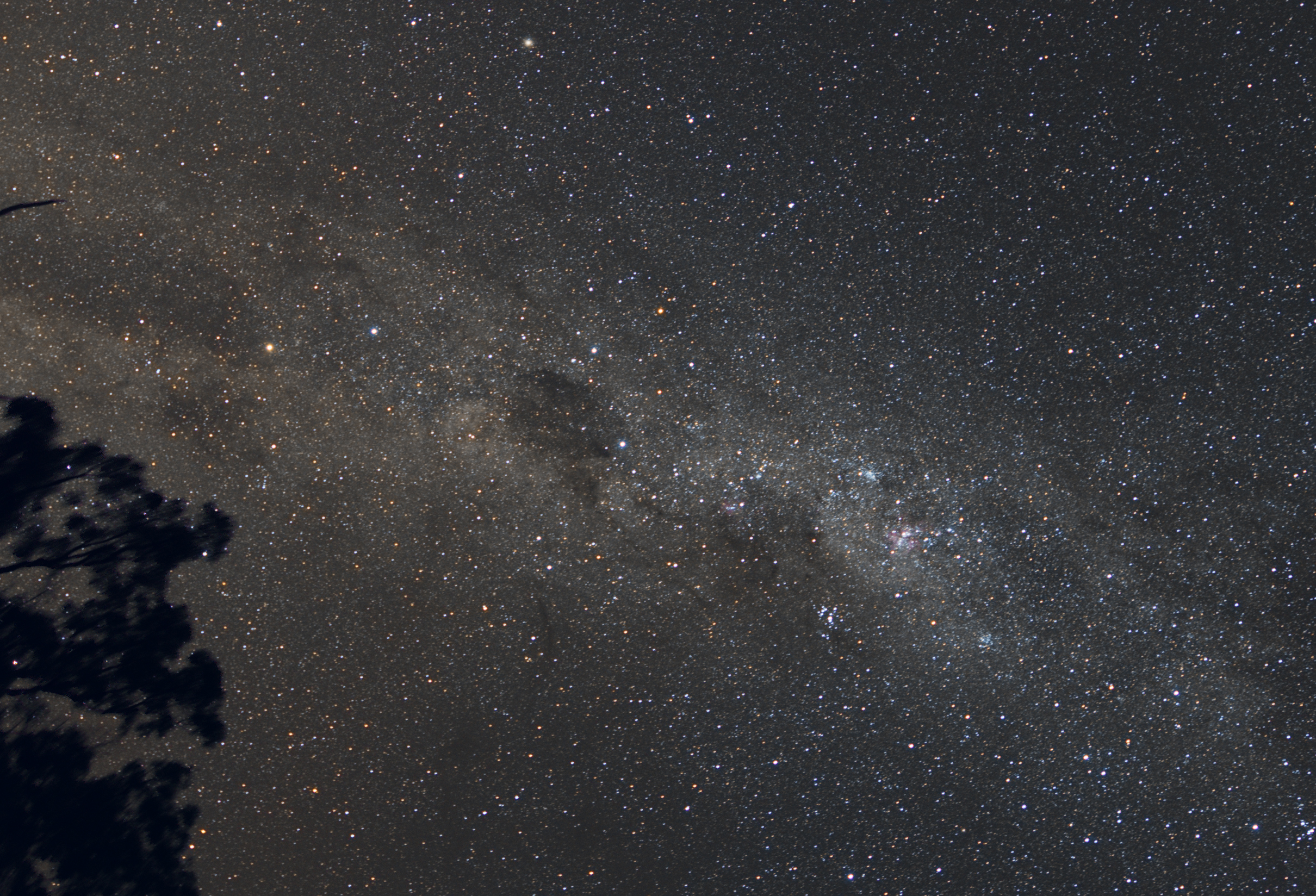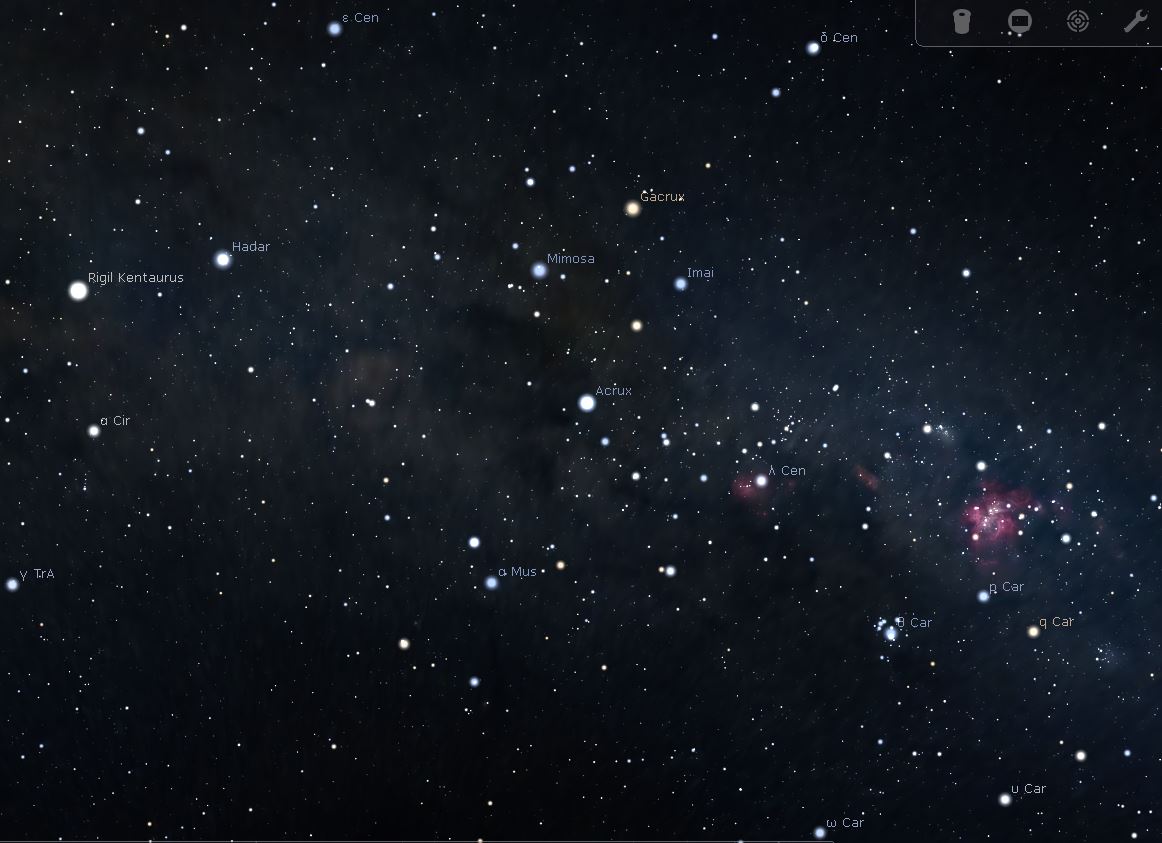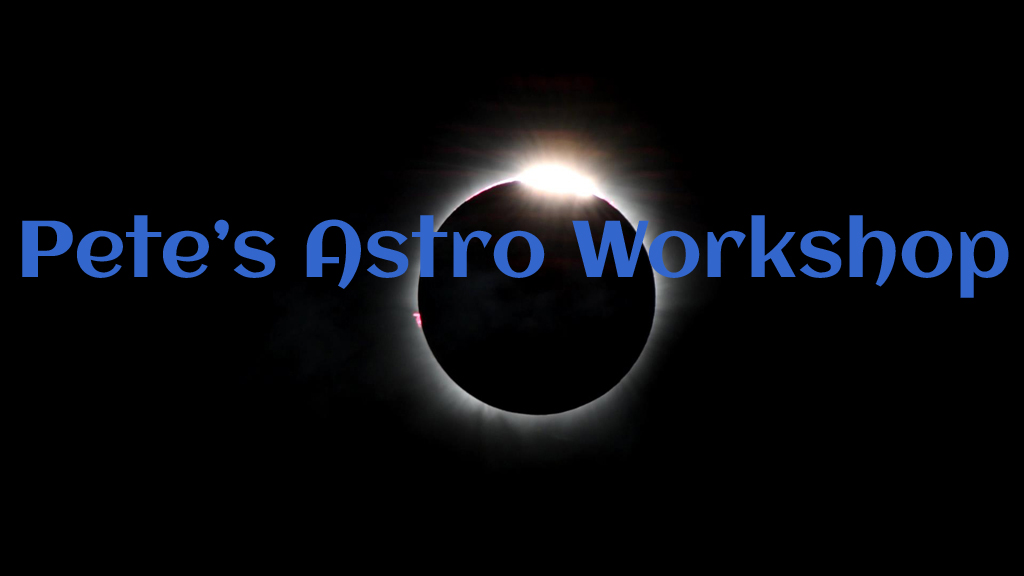Warrambungle Sky
Southern Milky Way

The magnificent southern Milky Way photographed from Warrambungle National Park in New South Wales, Australia. The images on this page were taken during an organised stargazing session on a New Scientist tour of astronomical sites in NSW.
The top part of the above image shows the Milky Way from Centaurus on the left, through Crux and into Carina. In the lower half can be seen the Magellanic Clouds, satellite galaxies of our Milky Way, in the constellations of Dorado and Tucana respectively.
Clearly visible is the Coal Sack in Crux, a prominent oval dark nebula easily visible to the naked eye from a dark sky site. The trees are slightly blurred because the camera was tracking the sky.
As the miriads of stars in these images can be difficult to identify, the image below presents a smaller region of the sky.
Technical details:
Nikon Z6 mirrorless DSLR with Nikkor Z 14-24 lens at 14mm focal length and f/2.8. Stack of 20 20-second exposures.

This image shows Alpha and Beta Centauri left of centre. Alpha (known as Rigil Kentaurus) appears yellowish as it has about the same temperature as our Sun (6,000K) with spectral type G2, while Beta (Hadar) appears bluish as it is a much more luminous (and much more distant) B-type star with a surface temperature over 20,000K.
The constellation Crux (the Southern Cross) can be found by using α and β Centauri as pointers, following their line to the right to find a kite-shape with an orange star at its head (to aid identification see the screenshot from Stellarium below). The orange star is Gamma Crucis (or Gacrux) a relatively cool (3,600K) M-type red giant star nearing the end of its life. The star at the foot of the cross, Alpha Crucis or Acrux, is another hot (24,000K) B-type star, 13th brightest in our night sky.
Further to the right the large pinkish region is the Eta Carina nebula. At its heart is one of the most luminous stars in the sky which had a major outburst in 1837 and now sports two lobes of expanding gas, visible through large telescopes.
Technical details:
Nikon Z6 mirrorless DSLR with Nikkor Z 14-24 lens at 14mm focal length and f/2.8. Stack of 11 30-second exposures. Processed in PixInsight.



0 Comments